Learning & Teaching
Learning and Teaching encompasses the following areas: Student Outcomes, Curriculum, Assessment, Reporting, Principles and Pedagogy.

Learning & Teaching
Learning and Teaching encompasses the following areas: Student Outcomes, Curriculum, Assessment, Reporting, Principles and Pedagogy.
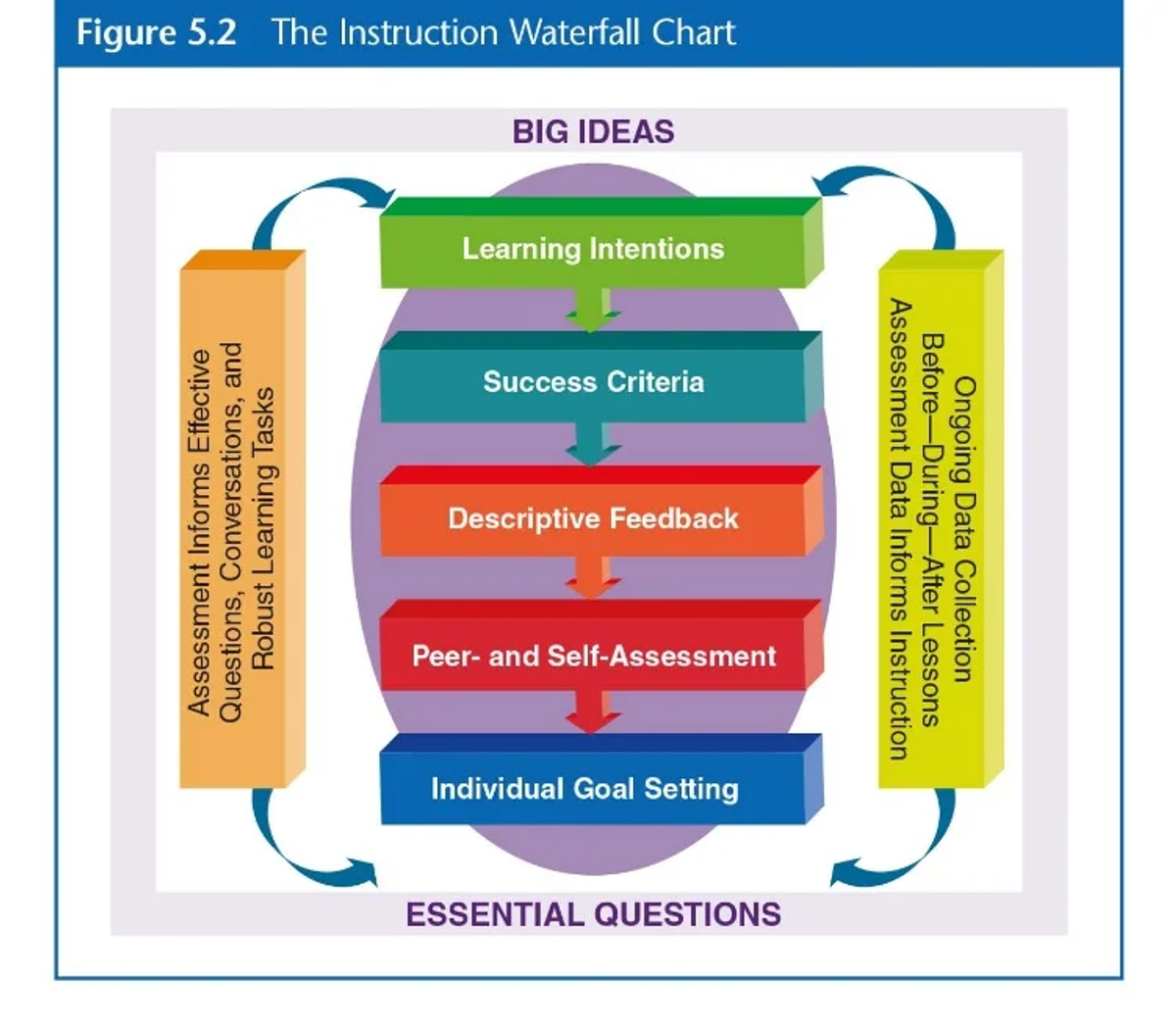

In a previous edition, I discussed the pedagogical framework for teaching and learning at St. Fidelis and explained the purpose of learning intentions and success criteria.
Today, let's look at Descriptive Feedback.
Descriptive Feedback is an ongoing, daily assessment that is timely and meaningful. It is given during learning, so it is purposeful. Teachers give students sufficient time to implement it. It can be collective feedback from the class or a group and provides an opportunity for teachers to see the impact of their teaching on students' learning.
In our learning spaces, teachers align their descriptive feedback with the learning intentions and success criteria, which helps students see where they stand about the expectations.
Teachers use descriptive feedback to identify areas for improvement and provide actionable steps for students to follow. This could include recommending a strategy to solve a mathematical problem, a resource or material that might support them, or a particular area of focus for them to improve. Descriptive feedback also promotes dialogue between the teacher and student, allowing for clarification, further questioning, and deeper understanding.
The upcoming student/parent/teacher learning conversations scheduled for Wednesday, June 19th, will allow parents to see the learning intentions, success criteria and descriptive feedback in our learning spaces.
National Simultaneous Storytime 2024
Last Wednesday 2,359,147 participants at 21,969 locations across Australia and the world joined for National Simultaneous Storytime to view Aura Parker read her picture storybook Bowerbird Blues. Bowerbird Blues has been shortlisted for CBCA Picture Book of the Year 2024.
Year 3/4BP tuned in at 12 noon as Aura read to an audience in Sydney and then modelled and explained the technique she uses to sketch the illustrations, particularly how to draw a bowerbird.
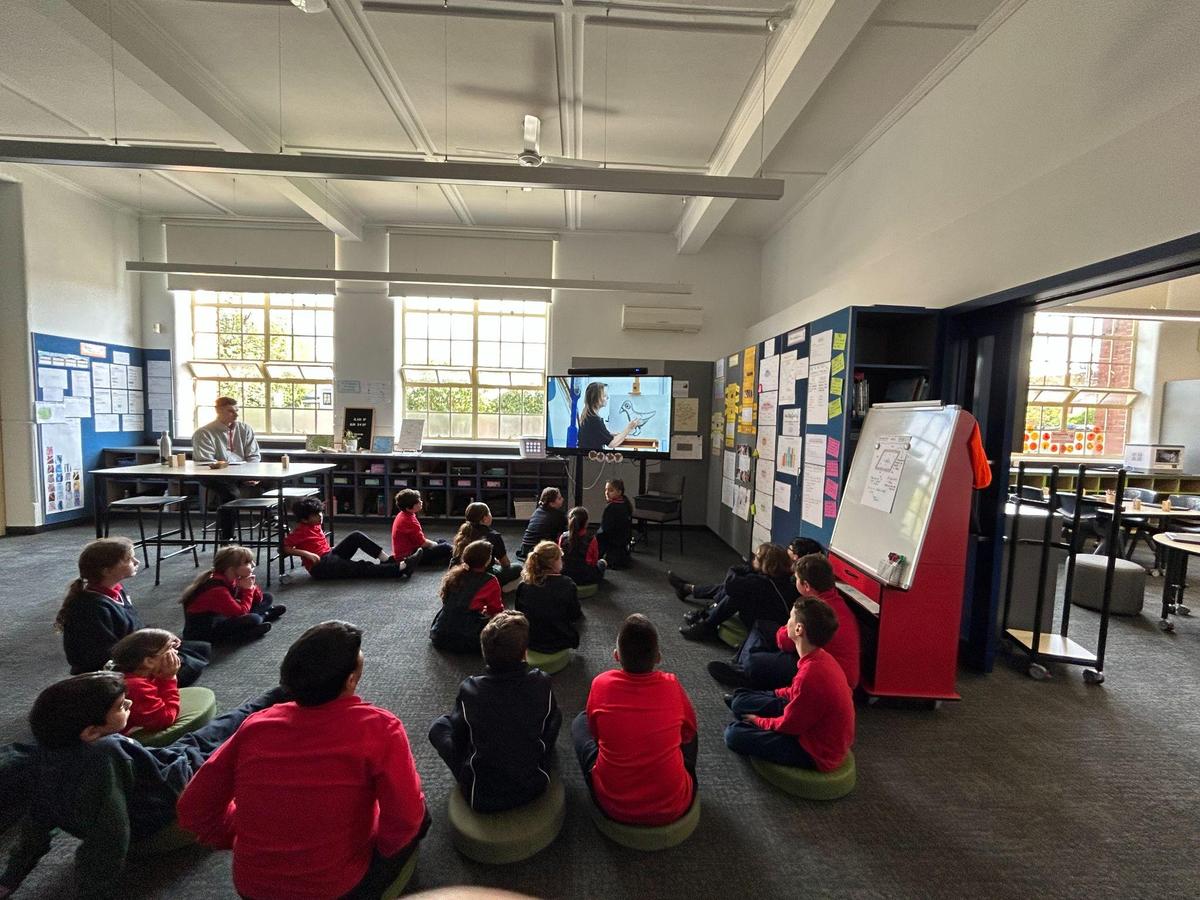
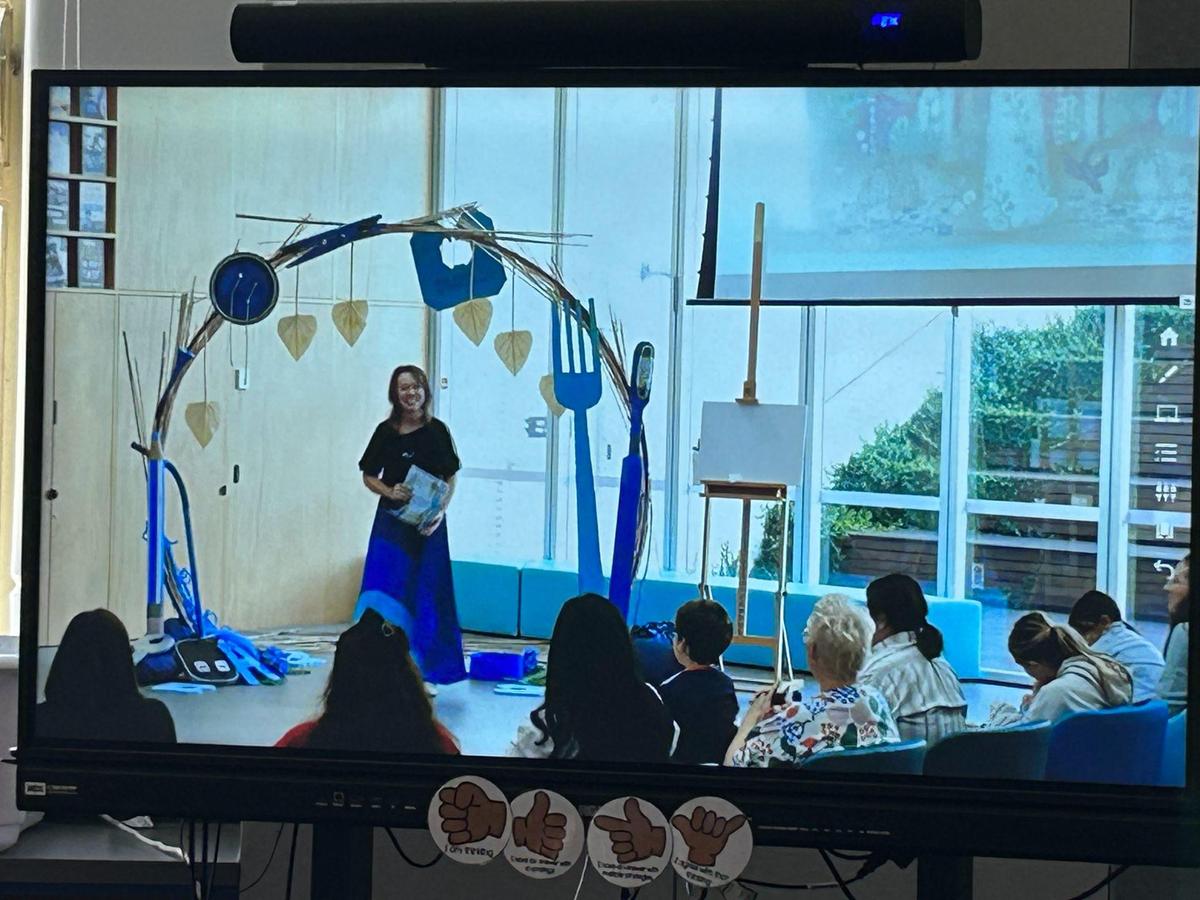
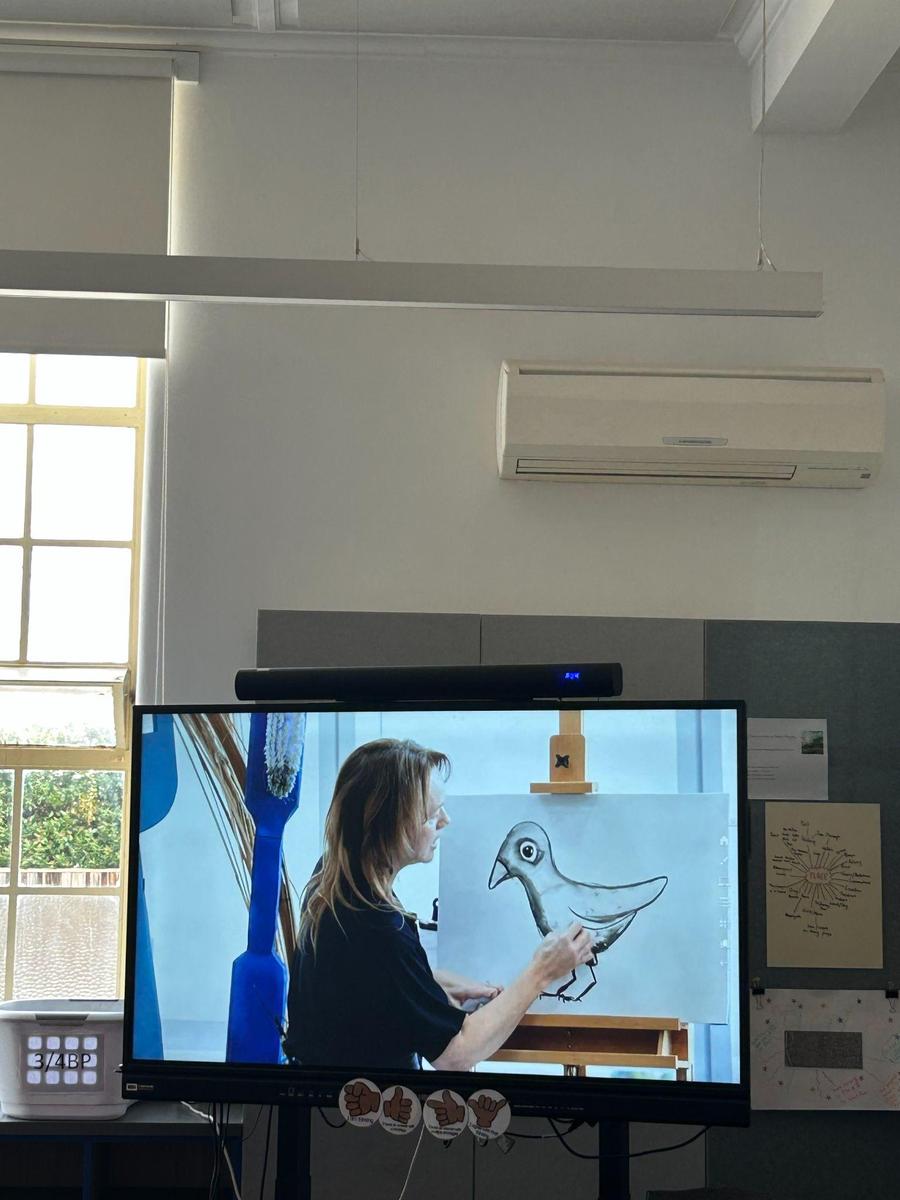



You can watch (rewatch) the recording of author and illustrator Aura Parker, reading the story live from Green Square Library in the City of Sydney by clicking on either of these links YouTube or Facebook.
Bernadette Parnis
Literacy Leader






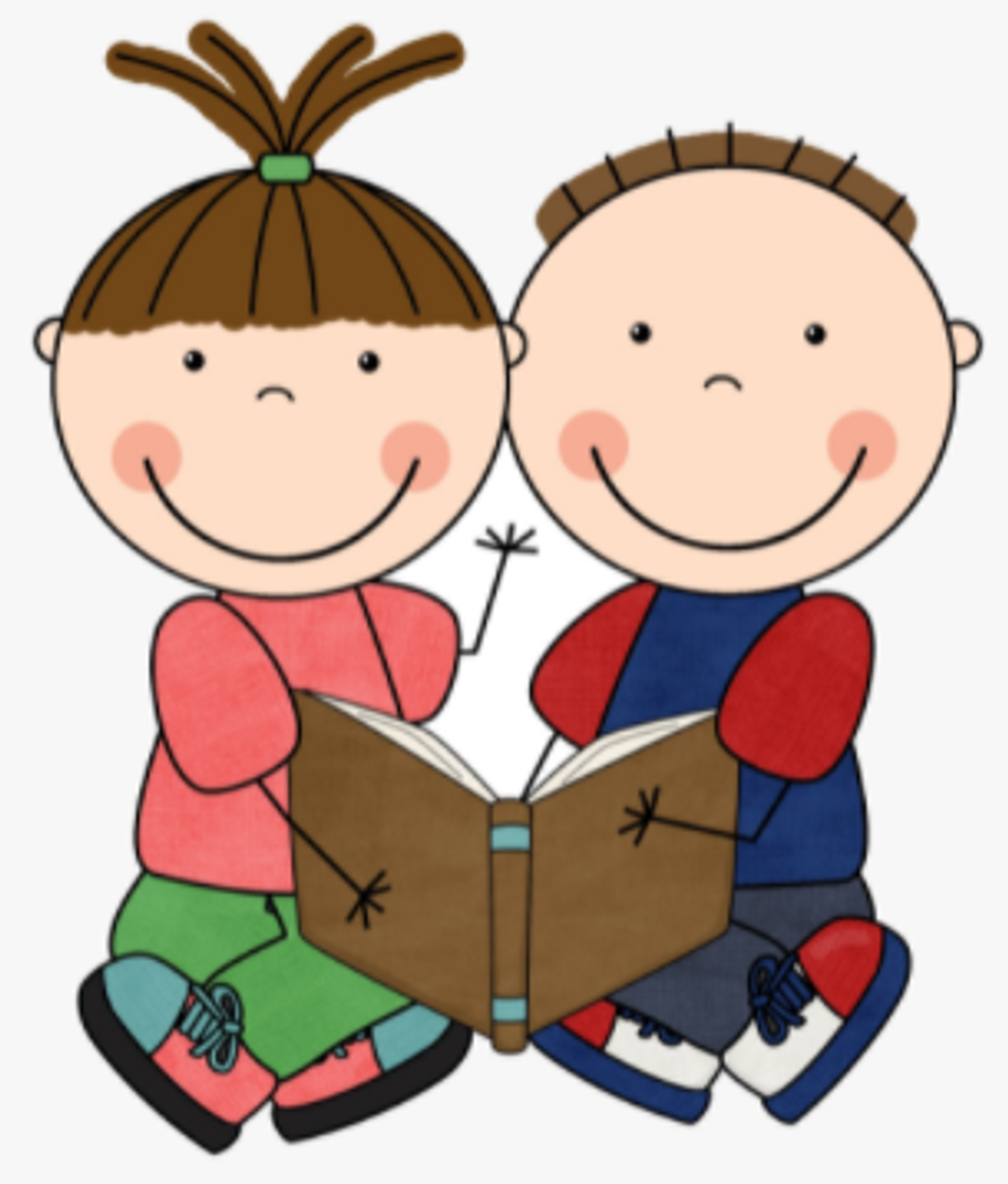

Each Monday afternoon during the school term, you are invited to Storytime. Come and listen to a story, enjoy completing a craft activity and have a play with some friends. Toddlers and pre-schoolers are welcome. Please enter via the Saunders Street gate. Parents/carers are required to stay for the Storytime session. For further details, please contact me via my email lwenckowski@sfmoreland.catholic.edu.au
RSVP: Please email me if you are attending so I can prepare resources etc.
Leanne Wenckowski
Family Engagement Leader
As I continue my work across the school in teaching Maths, I realise the importance of renaming. Those students who have understood this place value concept are able to transfer into the addition and subtraction problems they are presented with.
I came across this article by Angela Rogers and thought I would share it as it explains very well the need for our children to grasp this concept. You may find it worthwhile and take ideas on how you can help your child with this concept at home.


My PhD research into place value identified the need to focus our teaching around six key aspects Count, Calculate, Compare/Order, Make/Represent, Name/Record and Rename.
While each aspect is important, for me, the most critical is renaming. When I work with teachers, renaming is the place value aspect they are the least familiar with, and thus the least confident to teach. For many of us (me included) renaming was not taught to us at school, so it is a skill we need to spend time learning before we can teach it to our students. Whilst I, (and others such as my PhD supervisor Professor Di Siemon) have been advocating for the importance of quality instruction around renaming for many years, it is pleasing to note that in Version 9.0 of the Australian Curriculum, rename is specifically mentioned in Level 2,3,4 and 5. This highlights to teachers the importance of this skill in both whole number and decimal contexts.
Standard and Non-Standard renaming
Essentially renaming is rearranging a number into a different form without changing its value. We can rename numbers in standard and non-standard ways.
For example, the standard ways to rename 345 are:
3 hundreds, 4 tens, 5 ones
3 hundreds, 45 ones
34 tens, 5 ones
345 ones
There are also many non-standard ways, such as:
33 tens and 15 ones
30 tens and 45 ones
2 hundreds 11 tens and 35 ones
Both standard and non-standard renaming build upon a deep understanding of part-part whole. For example, to rename 45, students must have the flexibility to think of 4 tens as:
1 ten and 3 tens
2 tens and 2 tens
3 tens and 1 ten
They then need to recognise that each ten is equivalent to 10 ones and apply this knowledge to rename the number. For example, 45 is 3 tens and 15 ones. To distinguish between standard and non-standard renaming I think of a number expander.
Now, I would like to point out here, that I am not a big advocate for using number expanders to teach renaming. I know some people like to use them, but for me, as a learner, they never helped me to conceptually understand renaming- they just ‘magically’ gave me the answer (and there was a lots of cognitive load taken up correctly folding)!
For this reason, I don’t use them in my teaching. I consider this more a personal preference, than a guideline to follow, as I acknowledge that there may be students in your class for whom numbers expanders provide a useful visual cue. I just wasn't one of them!
It is important to remember that a number expander is an abstract representation of renaming, and it is important that you also support students to develop their understanding through concrete representations such as base 10 blocks.
Another constraint of a number expander is that they only show students standard forms of renaming. This is because the same digits remain on the expander and students simply open and close folds to rename the number. Thinking of this helps me to distinguish between standard and non-standard renaming. Standard renaming can be found using a number expander. Non-standard cannot, because the digits change. It is important to allow our students to explore both standard and non-standard renaming.
Whether we rename in a standard or non-standard manner, the value of the number remains the same. The form in which it is presented changes.
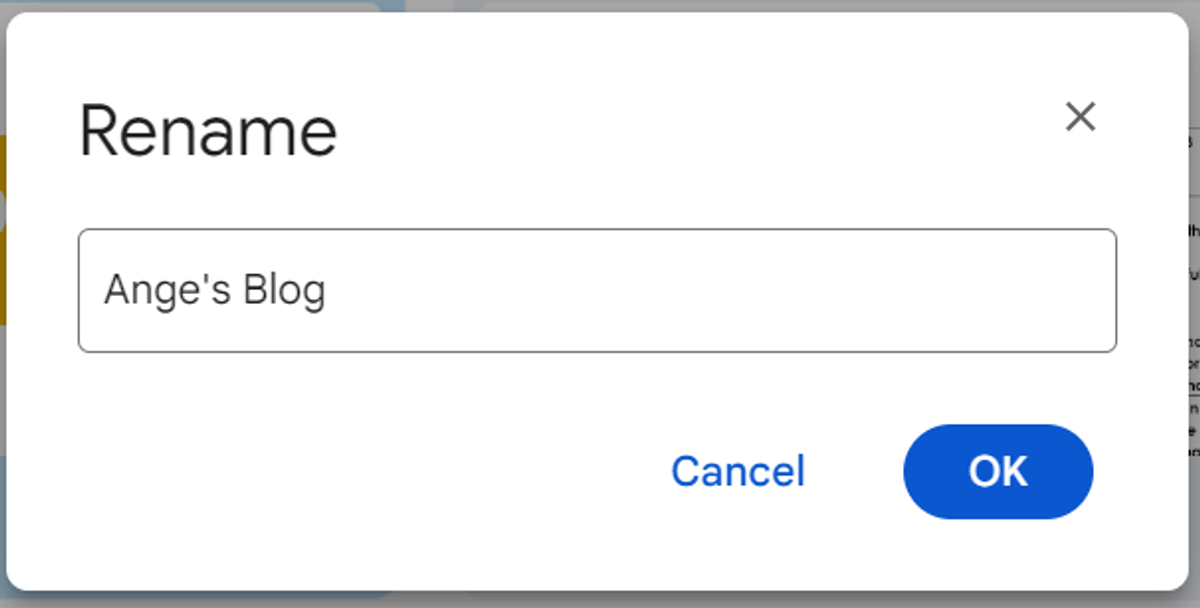

To help students to better understand the idea of renaming, I make links with renaming files on the computer. When we copy a file, we can choose to rename the file. In this process the contents of the file remains the same, it is simply the file label that changes.
Renaming is particularly difficult for students to master as it requires a deep understanding of our “10 of these is one of those” place value system. It also requires multiplicative thinking- something we know takes time to develop in students.
Renaming requires students to understand that there are smaller units “hiding within” larger units. For example, to rename 420 in term of tens, a student must understand there are 2 tens in 20 but there are also 40 tens “hiding inside” the 4 hundreds. When asked how many tens are in 420, children are accustomed to focusing their attention on the tens column, as they believe this is the only place the tens “live”. It is this narrow focus that leads students to become ‘Independent Column Thinkers’ (Rogers, 2018). Students who think in this way, fail to appreciate the multiplicative relationship between columns, making it near impossible to rename.
For this reason, I always encourage teachers to emphasise the word altogether to encourage students to think more broadly when renaming a number. For example, how many tens are there altogether in 420?
Without doubt renaming is the most difficult place value aspect to teach and learn. It is a very abstract concept, therefore visuals are critical. I like to introduce the idea of renaming using Russian Babushka dolls. These dolls allow students to see the smaller dolls hiding inside the larger, just like in place value where smaller units like tens ‘hide inside’ hundreds or thousands. I encourage students to look in each column in a number and consider which units are ‘hiding’. For example, in 420 I would ask:
“Are there any tens in the ones column?”, No, they are too big to fit in there.
“Are there tens in the tens column?”, Yes, there are two.
“What about the hundreds column?” Yes, there are 40 tens hiding.
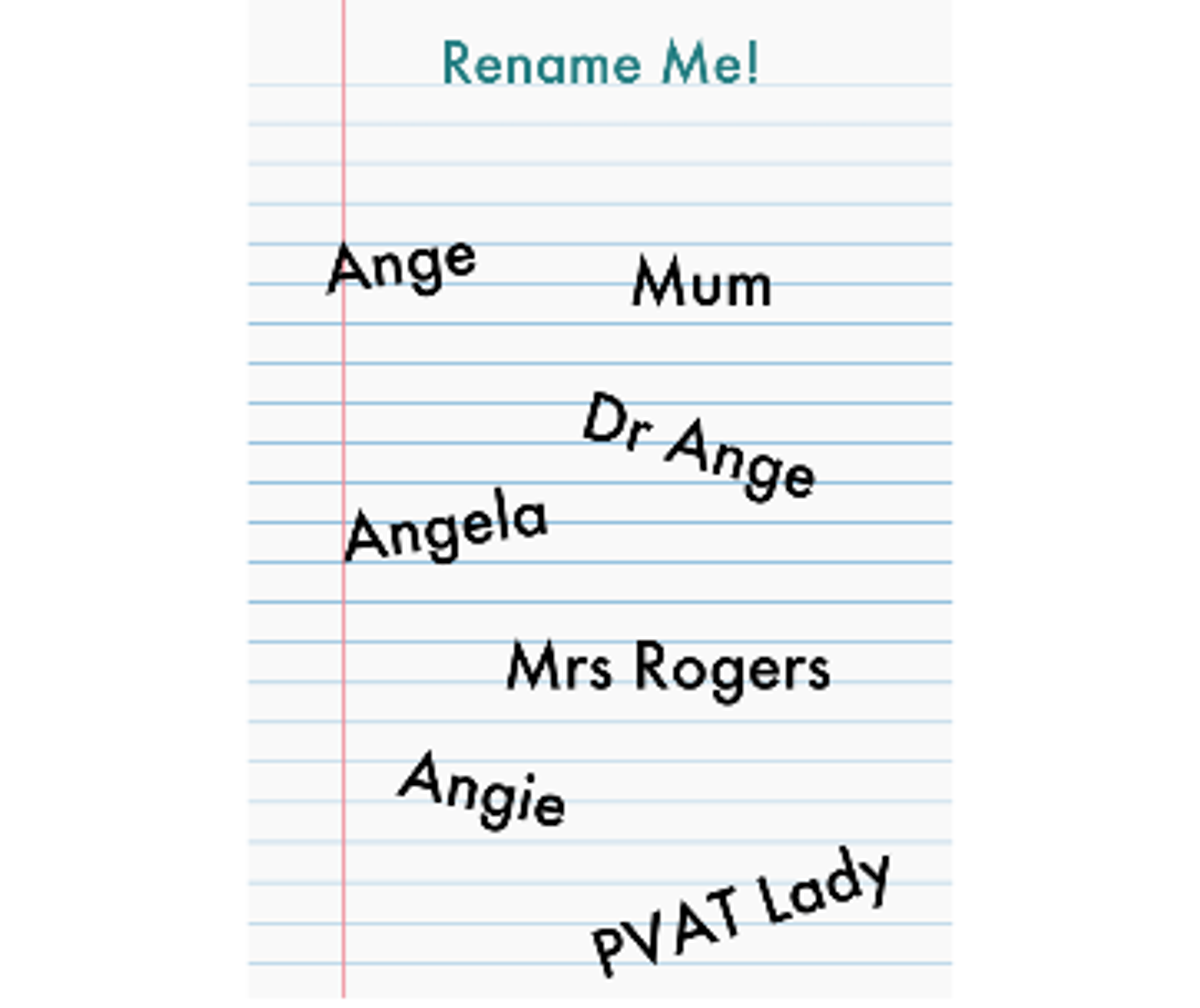

Therefore, we can rename 420 as 42 tens. We want students to appreciate that the value of the number remains as 420, it is simply written in a different form. Analogies can be made here- with their nicknames- for example, I can be renamed as ‘Ange’, ‘Dr Ange’ and ‘mum’, but I am the same ‘value’.
Similarly, whether 420 is written as 42 tens or 39 tens and 30 ones, its value remains the same.
Make the links
Algorithm
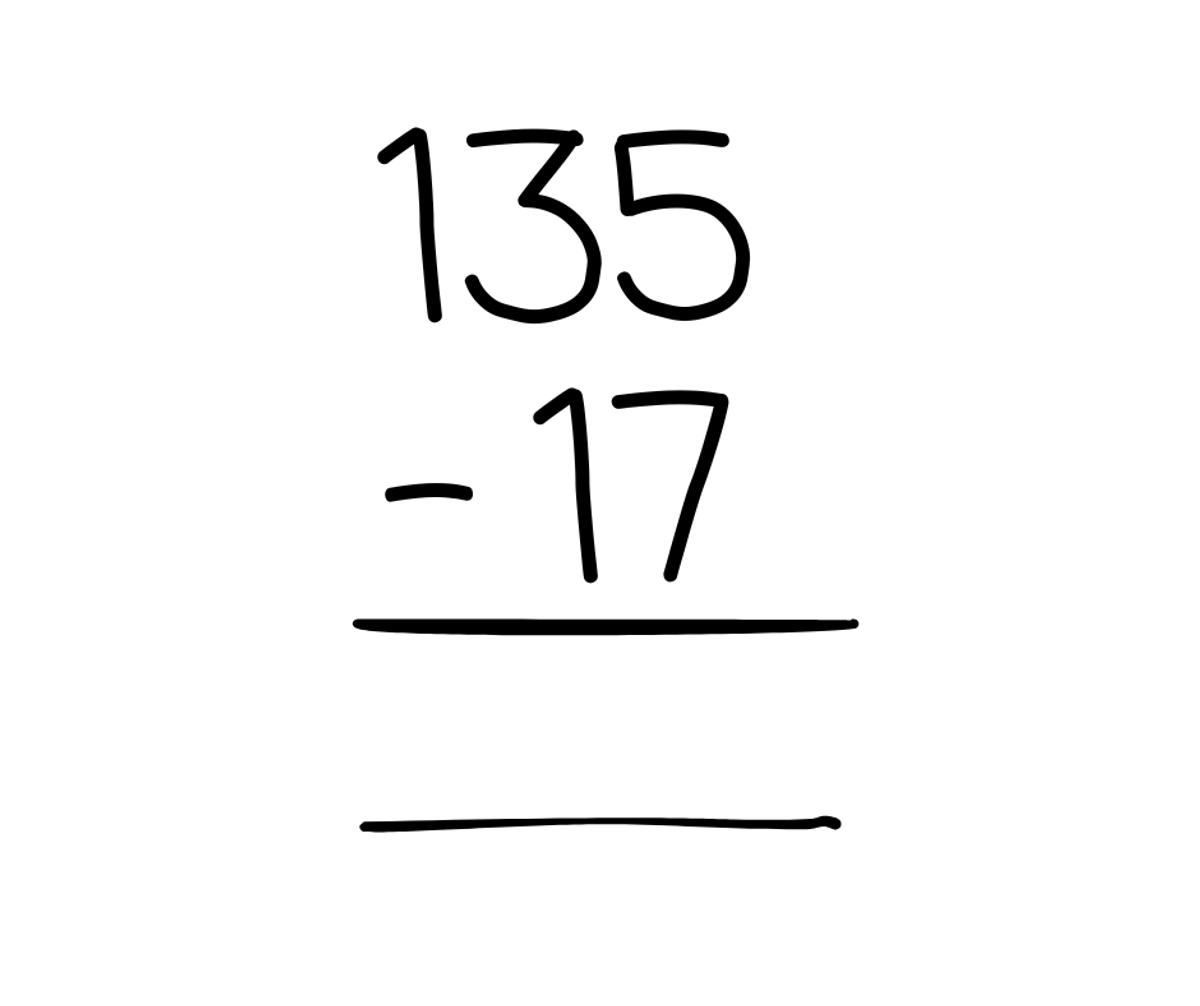

We must also make students aware of the contexts where renaming is useful. One such context is when completing the formal algorithm. Teachers often use terms like “borrow”, “trade” or “carry” when modelling the algorithm (because that is what we learnt growing up). I always ensure I use the term ‘renaming’ when modelling the algorithm. This helps students to see that the renaming they have been ‘doing’ in place value, is very useful and can be applied in the algorithm. In the subtraction algorithm example shown, I would move slowly to unpack the act of renaming and model the following place value language:
Can I take 7 ones from 5 ones? No (not unless I move into negative numbers)
At the moment I have 5 ones in 135, how can I rename 135 so I have more than 5 ones? (You could rename one of the tens as 10 ones)
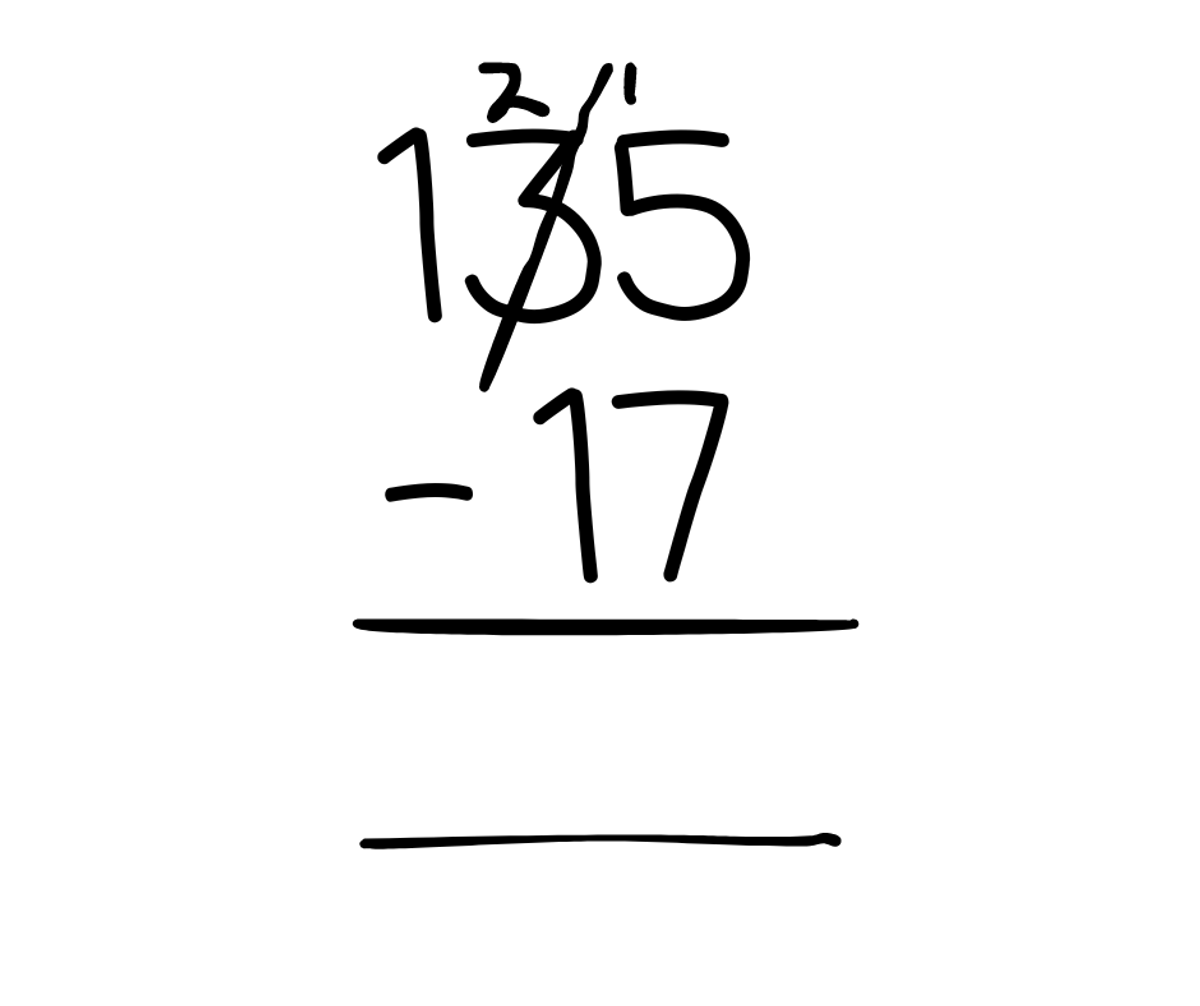

How many tens do we have altogether in 135? (13 tens)
OK, let’s rename the one of the tens as 10 ones (see image)
What is the value of the top number now that we have renamed? (The value has not changed- it is still 135)
How many hundreds are in the hundreds column now? (one hundred)
How many tens are in the tens column? (two tens)
How many ones are in the ones column? (15 ones)
Great, can we take 7 ones from 15 ones? (Yes, it leaves 8 ones)
Record 8 ones
Can we take 1 ten from 2 tens? (Yes, it leaves 1 ten)
Record 1 ten
Can we take zero hundreds from 1 hundred (Yes, it leaves 1 hundred)
Record 1 hundred
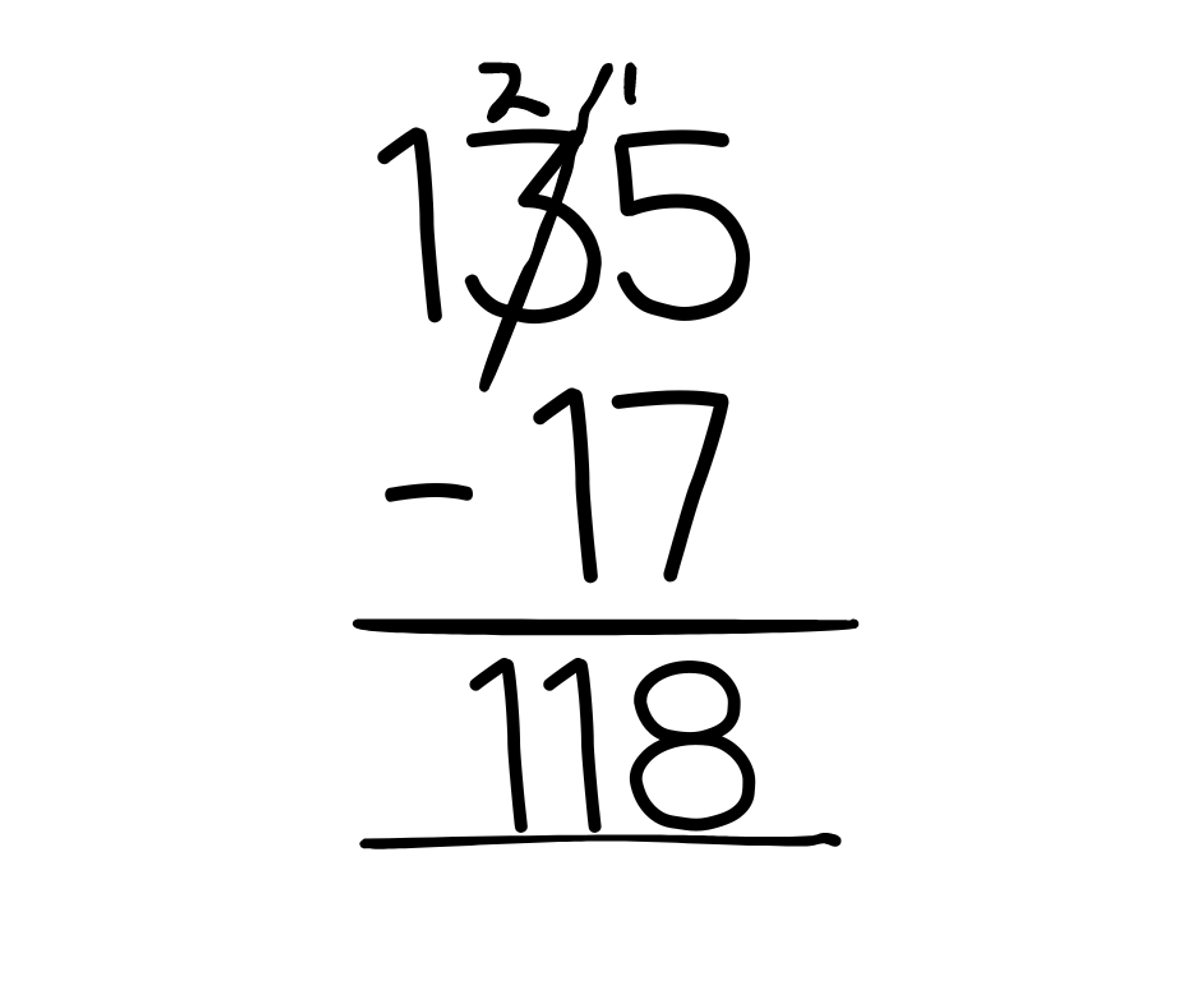

The consistent and accurate use of the word renaming allows students see how the algorithm links directly to their place value knowledge. Students also come to appreciate that when we rename a number in an algorithm we are not changing its value, we are writing it in a form that is simpler to compute.
Converting Units
Renaming also has important links with the work we do when converting units of measurement. For example, if we are going to convert 230cm to metres, we can use our knowledge of renaming. We are essentially asking how many hundreds (because there are 100cm in a metre) are there in 230? There are, of course, 2.3 hundreds.
If we were to consider how many centimetres are in 520mm, we are asking: How many tens are in 520 (because there are 10mm in each centimetre). The answer is 52. In both cases we have not changed the value of the original measurement, we are simply using a different unit as the reference point. This can be clearly seen when we rename time. We can rename 49 days as 7 weeks, or 1 year as 365 days (assuming it is not a leap year!). Again, we are not changing the total amount of time, we are simply changing the units we are using to describe the time.


Another example of this is at the petrol station. When we see the price, it is presented in the unit of 'cents' (because once upon a time the prices were less than $1!). You can see in the image that currently the price of unleaded petrol is 190.9 cents per litre. We could rename this in dollars as $1.909 because we would be thinking 'how many hundreds are there altogether in 190.9'?... this is because there are 100 cents in each dollar.
In summary, a deep understanding of renaming takes time to develop. It is a very complex skill within place value for both teachers and students. However, it is through renaming that students can develop a deep understanding of our multiplicative base 10 system. I encourage you to provide repeated opportunities for students to rename so as to develop their skills and confidence in this critical aspect of place value.
So this week as you drive past the petrol station, I encourage you to have a little think about renaming and some of the different contexts in which we can apply this skill!


SSV Inner North/Merri-bek Cross Country Championships 2024
Congratulations to Mia, Scarlett, & Violet who have qualified to compete at the Inner North/Merri-bek Division Cross Country Championships to be held on Wednesday 29 May at Banyule Flats.
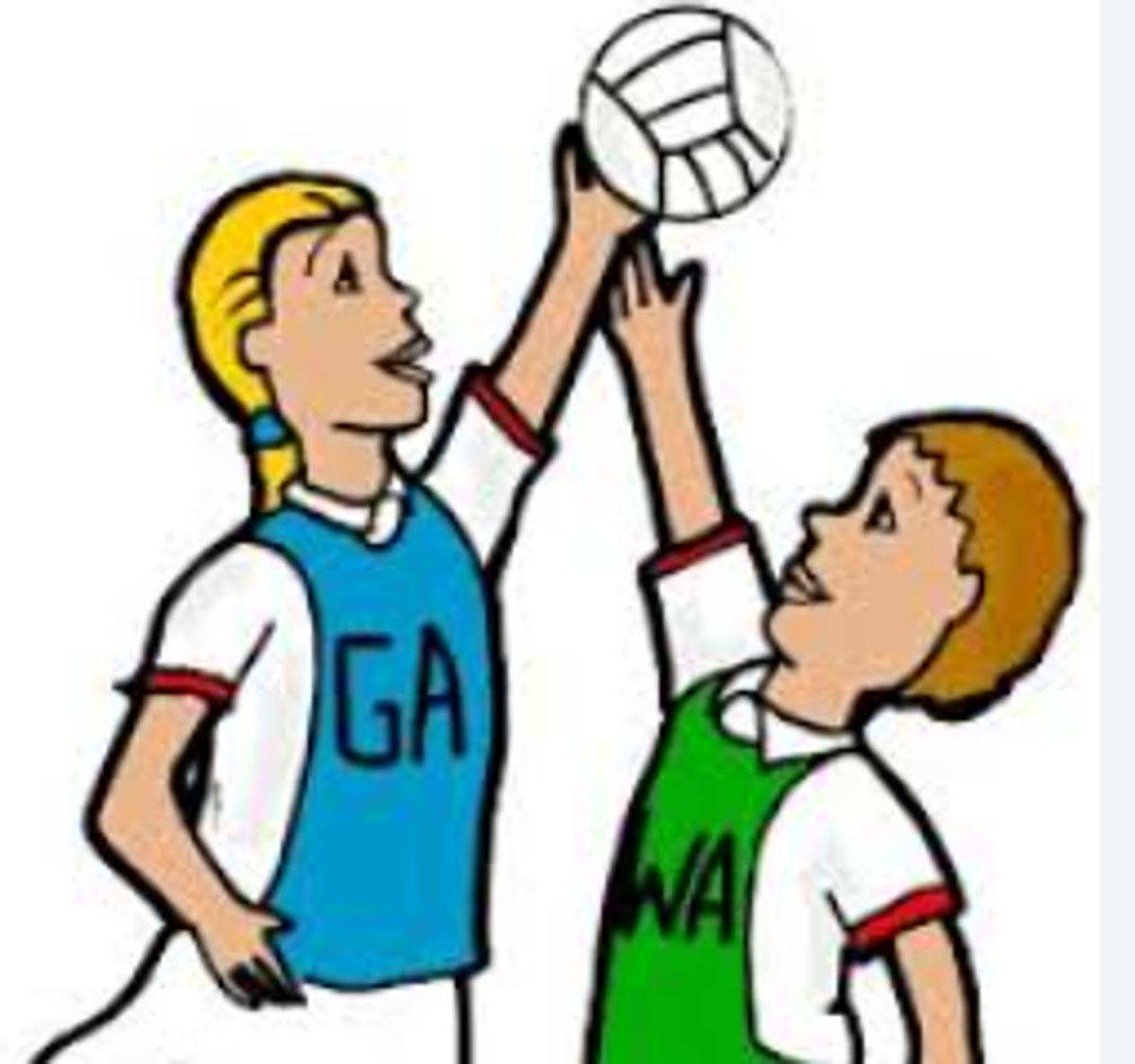

SSV Interschool Sport Competition
The next round of interschool sport is to be played on Friday 31 May against St Paul's. This is a HOME Game. Soccer and footy are to be played at Shore Reserve and netball played in the Benny Courts. Games are played from 11.30am-1.00pm.


Year 3/4 Sport
Through Sporting Schools Government Funding, our Year 3/4 students will be participating in 4 x soccer clinics on Fridays commencing on June 7. The program is designed by Football Australia’s technical and youth development teams to use Football as the vehicle for fun, engagement and physical activity with learning principles that can be then applied back into the classroom environment. With a focus on learning movement skills, teamwork, coordination and fun, the program encourages children to participate in game-based activities that reflect the Football Australia ‘Play for Life’ philosophy and the Personal Development, Health, and Physical Education syllabus.
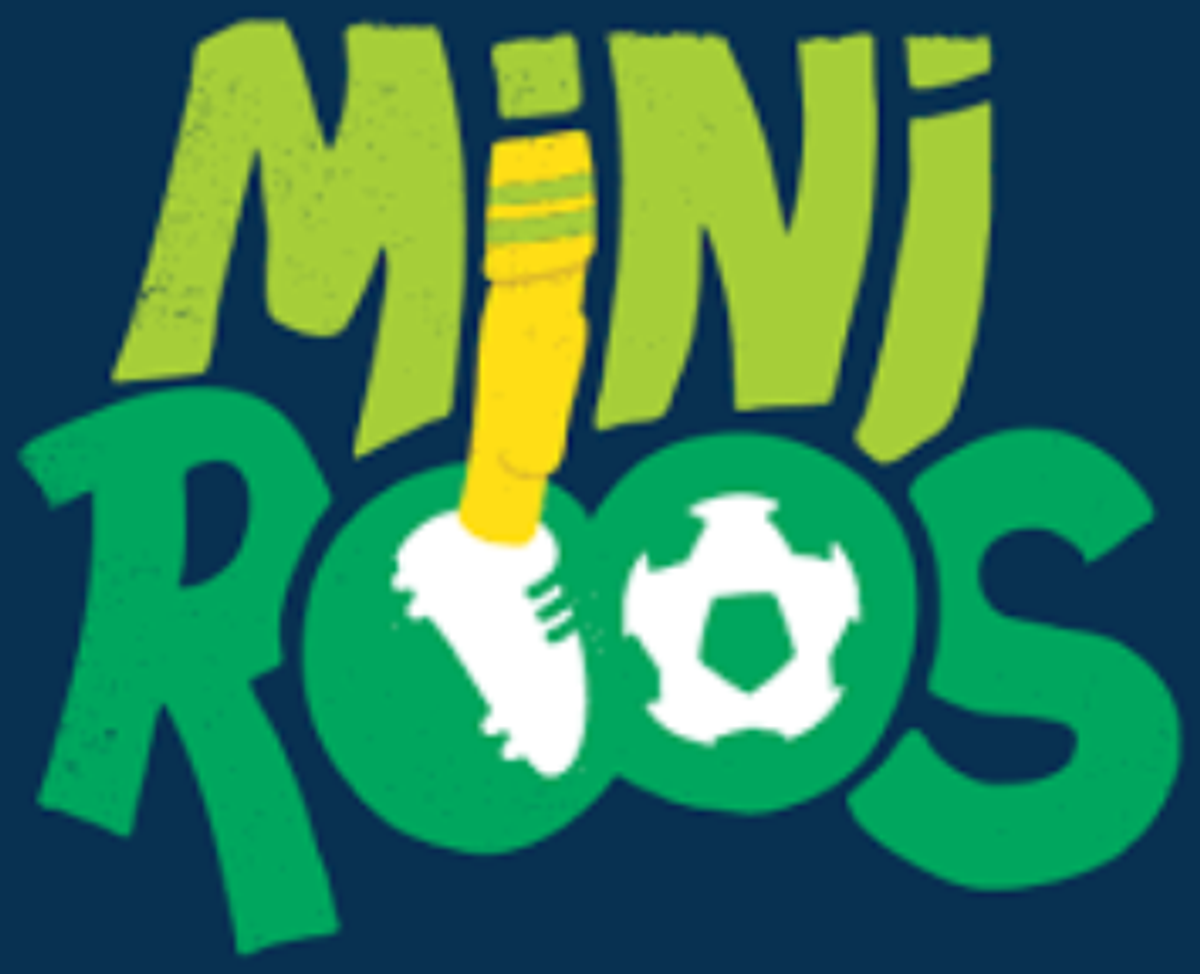

The foundation of the Football Schools Program is based on the junior program: MiniRoos. Their programs are tailored to the needs of each school, ranging in duration and are inclusive and available to students of all abilities.
Year 3/4 KEYRINGS
Year 3/4 students were introduced to the program ‘Tinkercad’. Tinkercad is a web program for 3D design, electronics, and coding. Students created their own Tinkercad accounts and their first task was to design a keyring charm using the features and tools from Tinkercad. The students were required to design their own charm to connect to a keyring. They were asked to design one of the following …
In the design brief, the students were required to insert a ring/loop connected to their charm so the charm is able to connect to the keyring chain. The purpose of this STEM task was for the students to explore and feel confident using the Tinkercad program and producing future 3D products.
In Term 4, there will be a St Fidelis STEM & Visual Art Showcase and their personalised designed keyring charms will be sold for $2 each on the night of the Exhibition.
Here are images of their Keyring Charms.
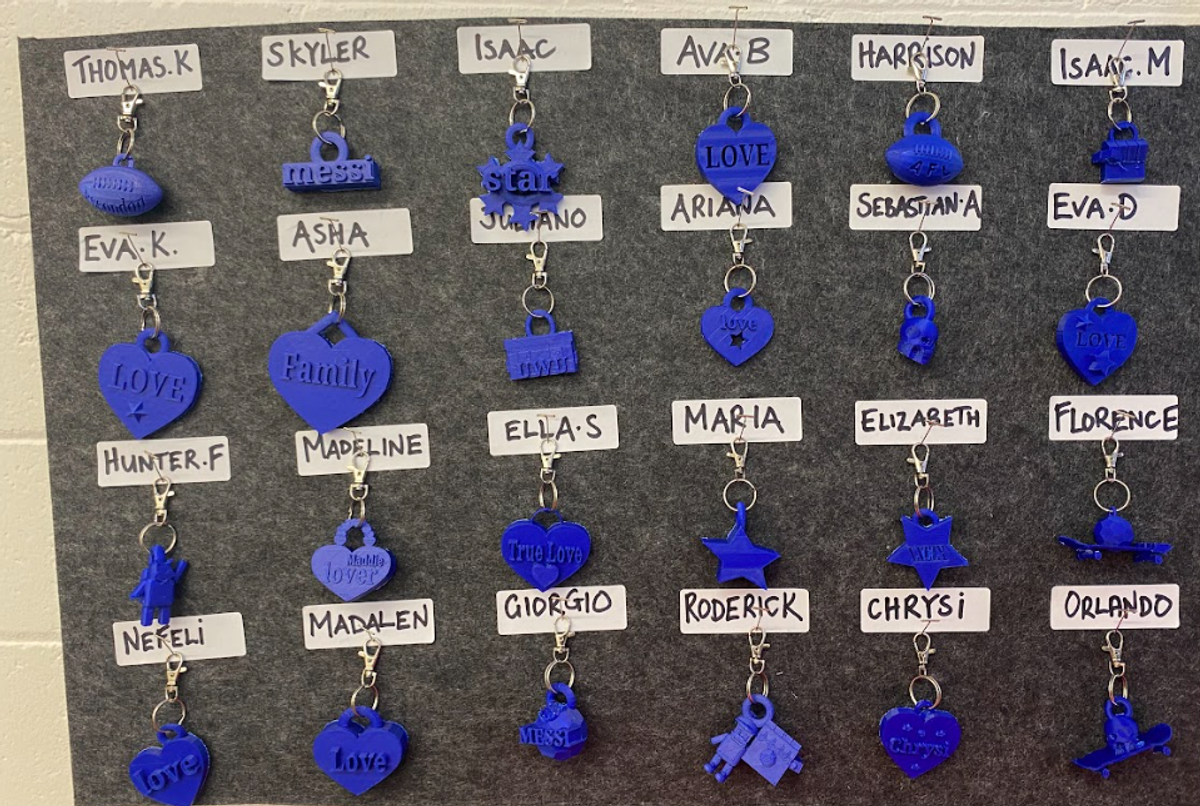



YEAR 5/6 ART NEWS - ‘THE RESURRECTION’
In the Term 1 Art program, the Year 5/6 students focused on the Resurrection of Jesus Christ. We explored a variety of paintings and images of the Resurrection and discussed the importance of the Resurrection and why is it so significant to our faith? We also focused on how the Indigenous Australians portrayed the Resurrection of Jesus through their arts works.
The students followed the design process and explored the human body. Students spent time studying and drawing the structure of the body, and designed their own representation of the Resurrection. Students worked in pairs and used a variety of materials to construct and mould a sculpture of ‘The Resurrection’. It was amazing to see how the students collaborated and thought through their idea of the resurrection through the visual arts to create a heavenly sculpture.
Here is an image of the Year 5/6 sculptures.


BUONGIORNO!
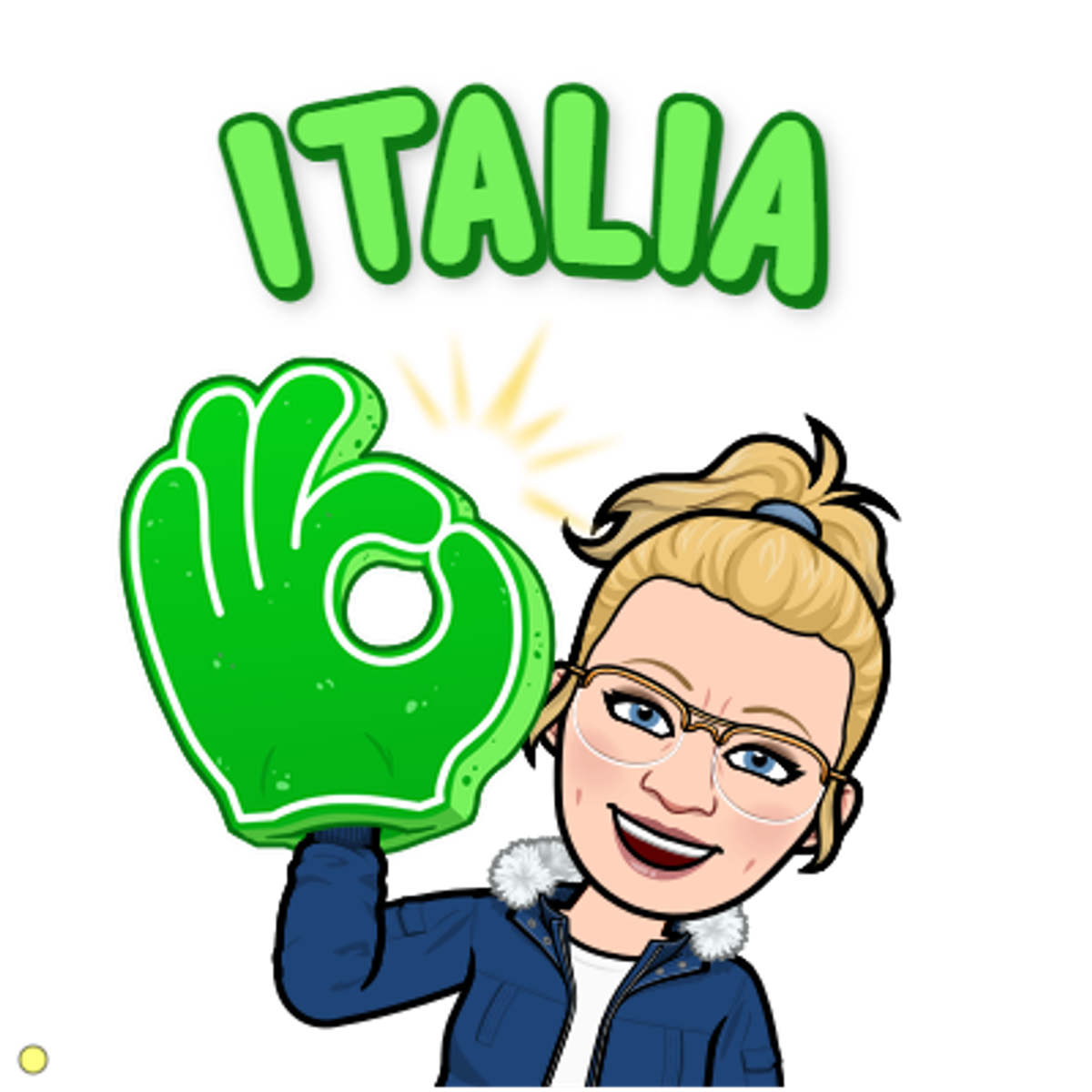

Salve! (Hello!)
I hope everyone had un buon weekend and was able to enjoy some of the warm sunshine. I tried as much as I could, since I’m still trying to fight off un raffreddore (a cold).
I wonder how your costume ideas are coming along for our school’s FESTA ITALIANA? I first mentioned this in last week’s newsletter. Remember this will take place giovedì 20 giugno 2024 (Thursday 20th June 2024), at school, so not long to go!


Has anyone been watching the Giro d’Italia? (Italian 3 week bike race). I know it is on TV quite late at night but you can watch repeats of the race the following day during the day time. I absolutely love watching i ciclisti, (the cyclists) racing through various parts of the Italian countryside and neighbouring countries to get to the finish line first. If you haven’t watched it, you may be able to watch some of the highlights. Plus this weekend that passed, was the final race, maggio (May) 26th. (At the time of writing this article, the winner had not been announced yet).
Perhaps some grade 5/6 students have been watching some of the repeats/highlights, since we have been talking about Italy in class. I wonder if anyone has been to some of the places covered throughout the race? Or may be going soon to some of the places? I know that a number of bambini (children) are telling me that they will be going over to Italy soon for vacanze (holidays)…I’ll get my valigia (suitcase) ready too! 😉
FESTA DELLA REPUBBLICA


This annual celebration will be taking place in Italy this coming domenica 2 giugno (Sunday 2nd June). Numerous celebrations will be happening throughout the country. Stay tuned for more information next week.
On that note, until next time…buona settimana! (Have a good week).
Signora Rosa 🌹